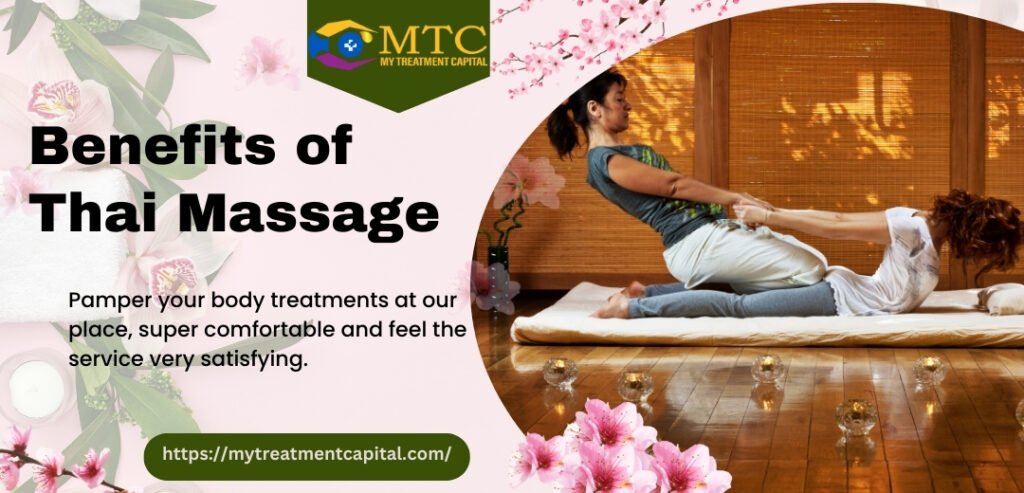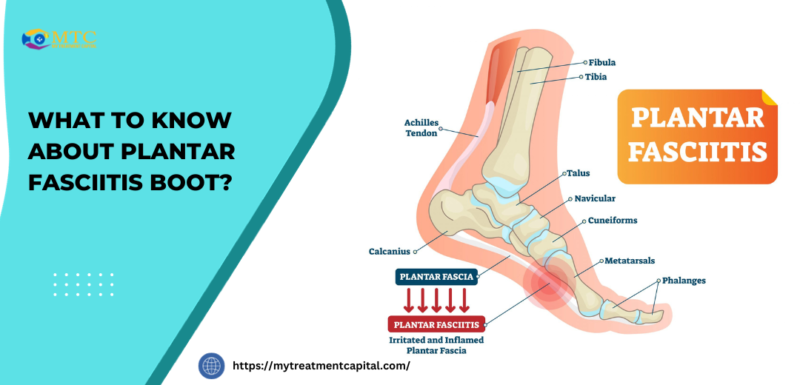Thai massage is an ancient healing technique that uses soft pressure, stretching techniques, and yoga-like poses to relax the body and promote general health. This traditional kind of massage has been around for thousands of years and has grown in popularity due to its multiple health advantages. In this complete guide, we will look at the science-backed benefits of Thai massage, it’s possible effects on a variety of health concerns, and what to expect during a session.
Understanding Thai Massage, an Ancient Healing Art
Thai massage, often known as Thai yoga massage or aided yoga, has strong roots in India and Thailand’s therapeutic traditions. Thai massage differs from regular Western-style massages in that it does not utilize oils or require vigorous rubbing and kneading. Instead, the practitioner leads the client through passive stretches, light adjustments, and yoga-like positions to relieve tension, increase flexibility, and promote circulation. It is vital to make clear that Thai massage is more than just a workout or a way to unwind; it is an integrated approach to healing.
The Benefits of Thai Massage: Backed by Science
Scientific research has shown multiple health benefits of Thai massage, providing evidence for its efficacy in a variety of settings. Let’s look at some of the important benefits supported by research.
i. Increased Flexibility and Range of Motion
Thai massage has been found to improve flexibility and range of motion by increasing blood flow and oxygen delivery to muscles. According to research, stretching and movement in Thai massage can improve joint function and ease muscle tightness. Thai massage improves joint mobility by targeting tendons and muscles, resulting in greater flexibility and ease of movement.
ii. Relief of Back Pain
If you have upper or lower back pain, Thai massage may help. Thai massage includes yoga positions, stretching, and deep pressure to assist relieve muscle tension and promote relaxation. Thai massage has been shown in studies to be more helpful in relieving back pain than other conservative management strategies. Thai massage has also shown promise in reducing pain associated with pressure points in the upper back.
iii. Relieve Chronic Headache or Migraine
Thai massage may relieve chronic headaches or migraines. According to research, Thai massage can help to lower the severity of migraine and tension headaches. The positive benefits of Thai massage on headaches may last for a few days to 15 weeks, making it a potentially valuable non-pharmaceutical option for headache management.
iv. Stress and Anxiety Relief
Thai massage has been shown to provide calming and relaxing benefits, which reduce tension and anxiety levels. Thai massage has been found in studies to reduce psychological tension and increase tranquility. Individuals who received Thai massage treatments had greater relaxation and less anxiety than those who had other therapies, according to brain scans. The combination of gentle pressure, stretching, and yoga-like movements in Thai massage contributes to its ability to induce a systemic feeling of relaxation and tranquility.
v. Improve Muscle Tension and Athletic Performance
Thai massage can be beneficial for athletes and those who indulge in physical activities. Thai massage techniques, such as assisted stretching and deep pressure, can improve muscle function, blood circulation, and oxygen delivery to the muscles. According to research, Thai massage can improve flexibility, speed, and agility, resulting in better sports performance. Thai massage promotes blood flow and helps with muscle repair, lowering the chance of injury.
vi. Improvement in Digestion
Thai massage contains abdominal massage, which helps improve digestion. Thai massage, which manipulates energy points within the belly through deep abdominal massage, may improve digestion and general gastrointestinal well-being. The activation of energy flow in the abdomen can help alleviate digestive discomfort and enhance the movement of vital energy throughout the body.
vii. Enhanced Joint Function and Flexibility
Thai massage mixed with wand exercises has been demonstrated to enhance joint function in persons with knee arthritis. In addition, a study of patients with knee osteoarthritis discovered that Thai massage gave pain reduction comparable to ibuprofen. Regular Thai massage treatments can improve your range of motion and flexibility, making it simpler to move around and accomplish daily tasks.
viii. Rejuvenation and Mental Stimulation
Thai massage uses whole-body motions, leaving many people feeling both rested and refreshed. In a study comparing Thai massage to Swedish massage, participants who received Thai massage reported feeling mentally and physically energized. While further research is needed to corroborate these findings, Thai massage has the ability to leave you feeling rejuvenated and re-energized.
Techniques and Principles of Thai Massage

Thai massage uses the expertise of Ayurvedic and Chinese medicine methods to restore balance and harmony to the body. During a session, the therapist uses their hands, elbows, forearms, and feet to apply deep pressure, manipulate energy channels, and stretch the muscles. The therapy is founded on the idea that our bodies have 10 major energy lines, known as seen lines, that can become blocked, causing discomfort and pain. Thai massage targets physical and emotional imbalances by activating these pathways and encouraging energy flow.
What to Expect During a Thai Massage Session
Before beginning your Thai massage experience, it’s critical to understand what to expect during a session. Thai massage, unlike standard Western massages, is usually performed on a mat or massage mattress on the floor, allowing for more movement and flexibility. Here’s a step-by-step overview of what you should expect during a Thai massage session:
i. Attire and Preparation
Thai massages are best performed in comfortable, loose-fitting attire. You may be provided with scrub-style clothing, such as a loose cotton shirt and drawstring pants. Unlike other types of massage, you will be fully dressed during the session. It is advisable to arrive a few minutes early to complete any relevant documentation and to alert the practitioner of any important medical history or concerns.
ii. Starting the Massage
The session starts with you laying on a mat or massage pad, usually on your back. The massage therapist will begin the massage by working on various areas of your body, beginning with your feet and progressing upwards along each leg. Using their hands, thumbs, elbows, and knees, the therapist will apply moderate pressure and stretch movements, and guide your body into yoga-like poses. The massage therapist’s body weight may be utilized to assist in deep pressure and stretching.
iii. Massage Progression
As the massage develops, the therapist will work on different parts of your body, such as your torso, shoulders, arms, and hands. They may employ a combination of deep pressure, stretching, and joint mobilization techniques to target specific points of tension and encourage relaxation. The therapist may also help you turn onto your sides and stomach, giving you a more complete massage session.
iv. Duration and Aftercare
A regular Thai massage session lasts about 90 minutes, but it can go up to two hours. Rest and hydrate after the massage to allow your body to recover and benefit fully from the treatment. It is recommended to include daily maintenance exercises, such as stretching and relaxation techniques, to maintain flexibility and prolong the effects of the massage.
Is Thai Massage Beneficial for You?
Thai massage therapy can be beneficial for people from many walks of life. Whether you lead a sedentary lifestyle or indulge in frequent physical activity, Thai massage offers a unique approach to healing and relaxation. However, several aspects must be considered before receiving a Thai massage. If you have any underlying health concerns, speak with your doctor to ensure that Thai massage is safe for you. Furthermore, pregnant people should take caution and seek professional guidance before getting a Thai massage.
Who Should Consider Getting a Thai Massage?
Thai massage may be beneficial if you lead a sedentary lifestyle and want to relieve aches and pains. It’s particularly beneficial if you live an active lifestyle or are an athlete, as it can improve your flexibility.
Regardless of your circumstances, Hill suggests that you consult with your doctor before arranging a Thai massage session, especially if you have the following conditions:
- Heart illness
- Hypertension (high blood pressure)
- Osteoporosis
- Diabetes
- Cancer
Additionally, Thai massage is not suggested for pregnant women. Overall, Thai massage may help reduce stress, improve flexibility, and relieve back pain, so it’s worth looking into the ancient discipline and how it might benefit you.
The Science and Art of Thai Massage
Thai massage, with its rich history and proven health benefits, continues to entice those seeking a holistic approach to wellness. Thai massage, which combines the wisdom of old healing methods with modern scientific knowledge, provides a distinct blend of relaxing, stretching, and energy manipulation. Whether you want to relieve pain, increase flexibility, reduce stress, or improve your general well-being, Thai massage may be the right treatment for you. Accept the ancient art of Thai massage and discover the possibilities for a happier, more balanced existence.
Conclusion
Thai massage, with its ancient origins and distinct techniques, provides a variety of scientifically proven advantages. Thai massage can help relieve headaches and back discomfort while also increasing joint function, flexibility, and sports performance. It has been demonstrated to alleviate tension, promote relaxation, and create a sense of renewal. However, you should check your healthcare physician to ensure that Thai massage is safe for you. When administered by a skilled practitioner, Thai massage may be a life-changing experience for both the body and the mind.
Frequently Asked Questions
Q1. How does Thai massage differ from other forms of massage?
Ans. Thai massage differs from Western-style massages in that it uses passive stretching and gentle pressure along energy lines to increase flexibility and relaxation. The client stays completely clothed throughout the treatment, and no oils are utilized.
Q2. What are the benefits of Thai massage?
Ans. Thai massage is thought to improve circulation, reduce tension, increase flexibility, and promote general wellness. It is also known to improve joint mobility and reduce muscle tension.
Q3. What should I wear for a Thai massage?
Ans. Wear comfortable, loose-fitting clothing, as the massage is performed completely clothed. To facilitate movement during the stretching exercises, avoid wearing tight or restrictive clothing.
Q4. Is Thai massage painful?
Ans. Thai massage should be painless. While pressure and stretching sensations may be felt, communicating with the therapist is essential. Inform them if anything makes you uncomfortable so that they can make the necessary adjustments.
Q5. How long does a Thai massage session normally last?
Ans. Sessions might vary in length, but a typical Thai massage session lasts from 60 to 90 minutes. Some practitioners provide shorter or longer sessions based on individual needs.
Q6. Can pregnant ladies have Thai massages?
Ans. Pregnant women should contact their doctor before receiving a Thai massage. In some situations, changes can be made to suit the pregnancy, but it is critical to protect the safety of both the mother and the infant.



